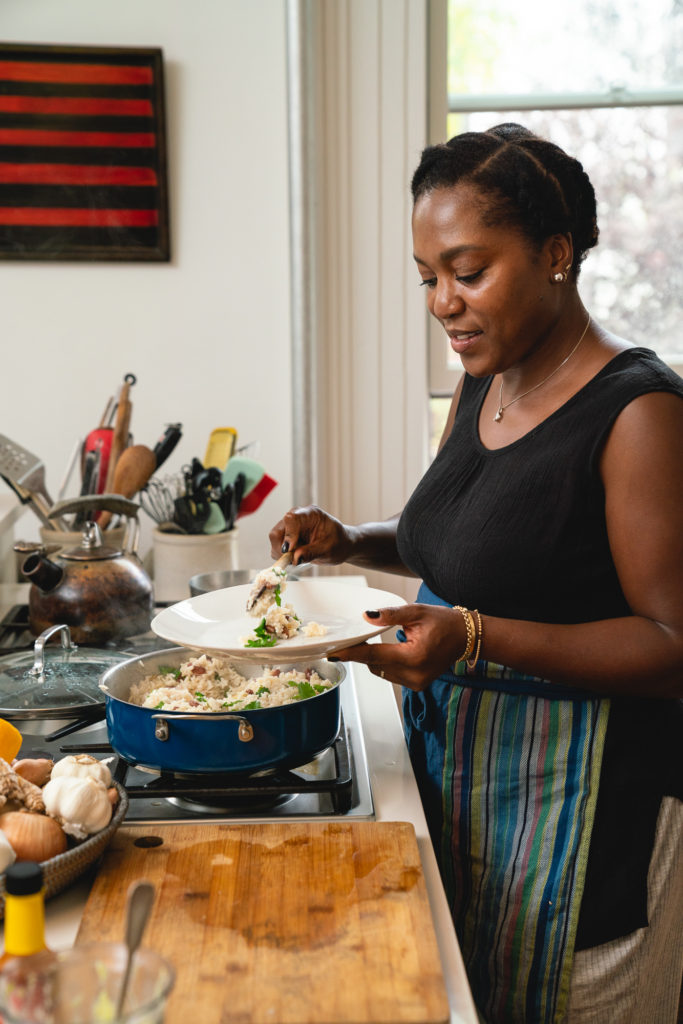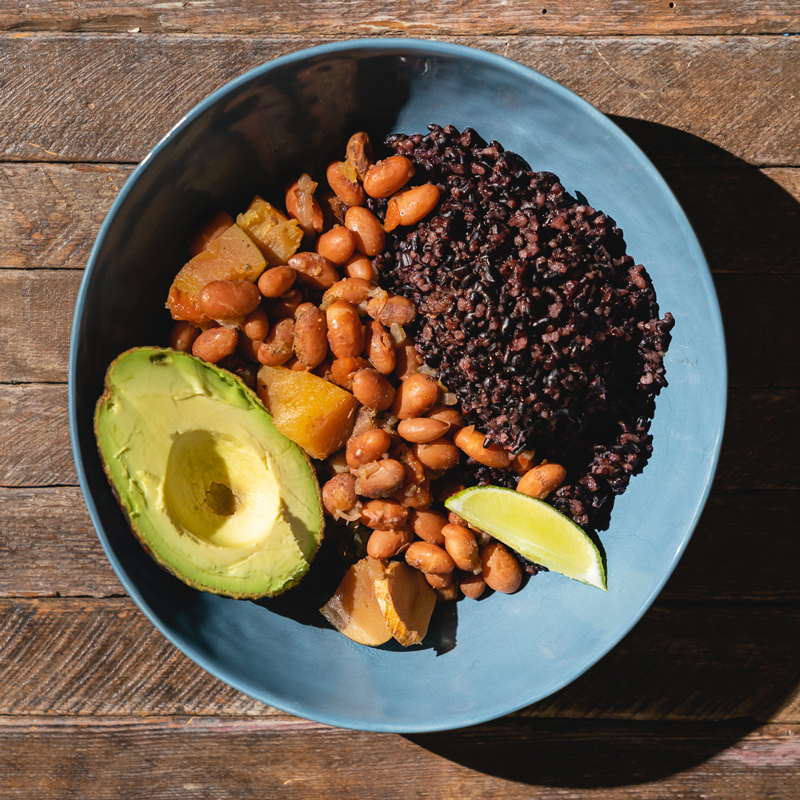Get a taste of The Caribbean through our instant pot and one-pot recipes!

Rice & Beans. Close your eyes and think about the first time you had rice and beans. Where were you and how old were you? I couldn’t tell you my exact age, however, I do know that peas and rice, a culinary cousin, were a staple in my family homes as a child. It’s no surprise that rice and beans are a favorite of my children.
Rice is a complex grain. On the surface, it’s a staple dish that provides sustenance for so many. The origins of rice continue to be debated while culinary historians agree that two species of rice originated in both Africa and Asia before colonization. The story of how rice made its way to the United States is steeped in pain and injustice and is no less complicated today than during slavery. Rice has become a polarizing food in the world of health and wellness with practitioners warning their patients of the supposed ills of rice, particularly white rice. Naysayers purport that the carbohydrates in rice are bad and that white rice is void of any nutritional value. Well, I’d like to provide an alternate evidence-based view. Rice and all of its varieties– including white rice–provide options for people. Rice in all of its varieties is a source of fiber, magnesium, and other nutrients. In my clinical experience, providing options without shame or guilt allows us to make choices based on our individual likes and dislikes, cultural identity, as well as our current health.

In my nutrition practice, we work with a diverse clientele and see patients with backgrounds from around the world. They often tell us that there is some version of rice and beans that shows up on their tables. Some note that the versions on their tables are heritage dishes and others simply love rice and beans. At its base, it’s a simple and versatile dish. The types of rice may vary (red, black, brown, or white) and the beans and seasoning certainly vary as well.
As a dietitian, I remind my patients that rice and beans are a wonderful combination. The beans supply an array of plant-based proteins, vitamins, and minerals as well as fiber. Rice supplies vitamins as well as fiber and when eaten together, you can reap the benefits of the full amino acid profile as it’s a complete protein.
For some, preparation may be a barrier. I’m sharing two versions, one made in an instant pot to cut down on the time needed to make dry beans from scratch and the other using canned beans. Both options are a nutritious way to get a quick meal on the table.

The instant pot version is reminiscent of stewed beans that I enjoyed as a child on family visits back to Trinidad and Tobago. The one-pot red beans and cilantro rice remind me of the rice and beans I would regularly buy from my local Dominican restaurant when I was in college.
Both are tastes of home.
If you want to try your hand at my one pot red beans and cilantro rice or instant pot stewed red beans with black rice head over to my recipes and get cooking! Leave me a comment and let me know how you made it!



Leave a Reply